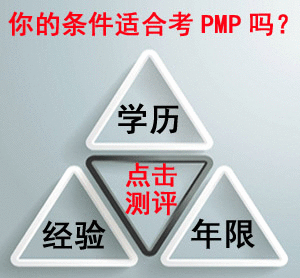21.The total float for a path is -20 (minus 20) days. What may this mean?
A. The critical path must be evaluated to determine the actual float.
B. Project is expected to finish 20 days earlier.
C. Each activity has 20 days float
D. Duration Compression may be required to satisfy the project completion.
21. 一條路徑的總時差是-20 天,它的含義是什么?
A. 為了確定實際總時差,必須對關鍵路徑進行評價
B. 項目預期會提前20 天完成
C. 每個活動時差為20 天
D.為了準時完成項目,需要進行工期壓縮
參考答案:D。路徑時差小于0,說明進度延期,需要進度壓縮。參見《PMBOK 指南》第五版第176-177 頁22.In crashing a task, you would focus on
A. As many tasks as possible
B. Non-critical tasks
C. Accelerating performance of tasks on critical path
D. Accelerate performance by minimizing cost
22. 在任務趕工時,你會集中于:
A.盡可能多的任務
B.非關鍵任務
C.加速關鍵路徑上任務的執行
D.通過降低成本加速執行
參考答案:C。趕工需要壓縮關鍵路徑上的關鍵活動。參見《PMBOK指南》第五版第181 頁
23. You are assessing the cost for a software development project. You discovered that, except for buying CAD application software, you need to hire some staff to plot on it. And more drawings you have, the unit cost will be less. This is because of:
A. Monte Carlo Analysis
B. Cause and Effect
C. Learning Curve Theory
D. The Law of Diminishing Returns
23. 你在評估一個軟件項目的成本。你發現,除了購買CAD 軟件費用外,只要雇用人, 進行畫圖,就可以了。這樣,你畫圖越多,單位成本就越低。這是:
A. 蒙特卡洛分析
B. 因果關系
C. 學習曲線理論
D. 收益衰減法則
參考答案:C。學習曲線的定義。
24.While reviewing project performance, the project manager determines that the project is behind schedule. What is the BEST thing to do?
A. Let management know
B. Tell the customer
C. Look for tasks that can be done in parallel
D. Remove resources from the project to one that is not failing
24. 評審項目績效時,項目經理發現項目落后于進度。最應該做的是:
A. 讓管理層知道
B. 告訴客戶
C. 尋找可以并行執行的任務
D. 從項目移除資源到另一個沒有失敗的項目上
參考答案:C。進度落后,需要進度壓縮,選項C 是進度壓縮中的快速跟進。參見《PMBOK 指南》第五版第181 頁
請參閱以下信息,回答問題25 和26:
任務期限(周)任務期限(周)
A2 F4
B3 G7
C2 H3
D5 K4
E0 L3
25.任務D 提前四周完成。這對項目期限產生什么影響?
A.項目期限沒有任何改變
B.期限減少一周
C.期限減少三周
D.期限減少四周
參考答案:D
26.描述該變更之前原關鍵路線的任務順序為何?
A.B、G、H 和L
B.A、D、F、K 和L
C.B、C、E、K 和L
D.B、C、D、F、K 和L
參考答案:D
請參閱以下信息,回答問題27 和28:
項目有三個活動,A 活動要5 周,B 活動要6 周,C 活動要7 周,A 活動完成1 周后B才能開始,C 活動要在B 開始后一周才能開始
27.項目一共要多久能完成?
A. 12周
B. 13周
C. 14周
D. 17周
參考答案:C。5+1+1+7=14 周
28.活動B 與活動C 的邏輯關系是什么?
A. 開始到開始
B. 開始到完成
C. 完成到開始
D. 完成到完成
參考答案:A
29.During planning you discover that the time needed to complete the project is longer than the time available. What do you do?
A. Contact the customer and tell them that their required date can not be met.
B. Meet with management and tell them that their required date cannot be met.
C. Crash or fast track the project
D. Crash or fast track the project and go to management with options
29.在計劃編制過程中,如果你發現項目完成所需時間超過了可利用的時間,你該做些什么呢?
A. 與客戶碰頭,告訴他們不能按要求的日期完成
B. 與管理層會面,告訴他們不能按要求日期完成
C. 項目進行趕工或快速跟進
D. 項目進行趕工或快速跟進,并且向管理層提出選擇方案
參考答案:D。進度落后,需要進度壓縮。參見《PMBOK 指南》第五版第181 頁
30.A person estimates that a commute home will most likely take one hour. On further questioning, she estimates that the trip could take as little as 45 minutes, best case, or as long as 1 hour 45 minutes, worst case. What is the standard deviation based on the estimates?
A. 10 minutes
B. 15 minutes
C. 50 minutes
D. 60 minutes
30.一個人估計她回家最可能的情況是花1 小時時間。她又進一步推算,在最快情況下要45 分鐘,最慢要1 小時45 分鐘基于這樣的估計,這個人回家所花的時間的標準差是多少
A. 10分鐘
B. 15分鐘
C. 50分鐘
D. 60分鐘
參考答案:A。標準差的計算公式。參見《PMBOK 指南》第五版第170-171 頁




